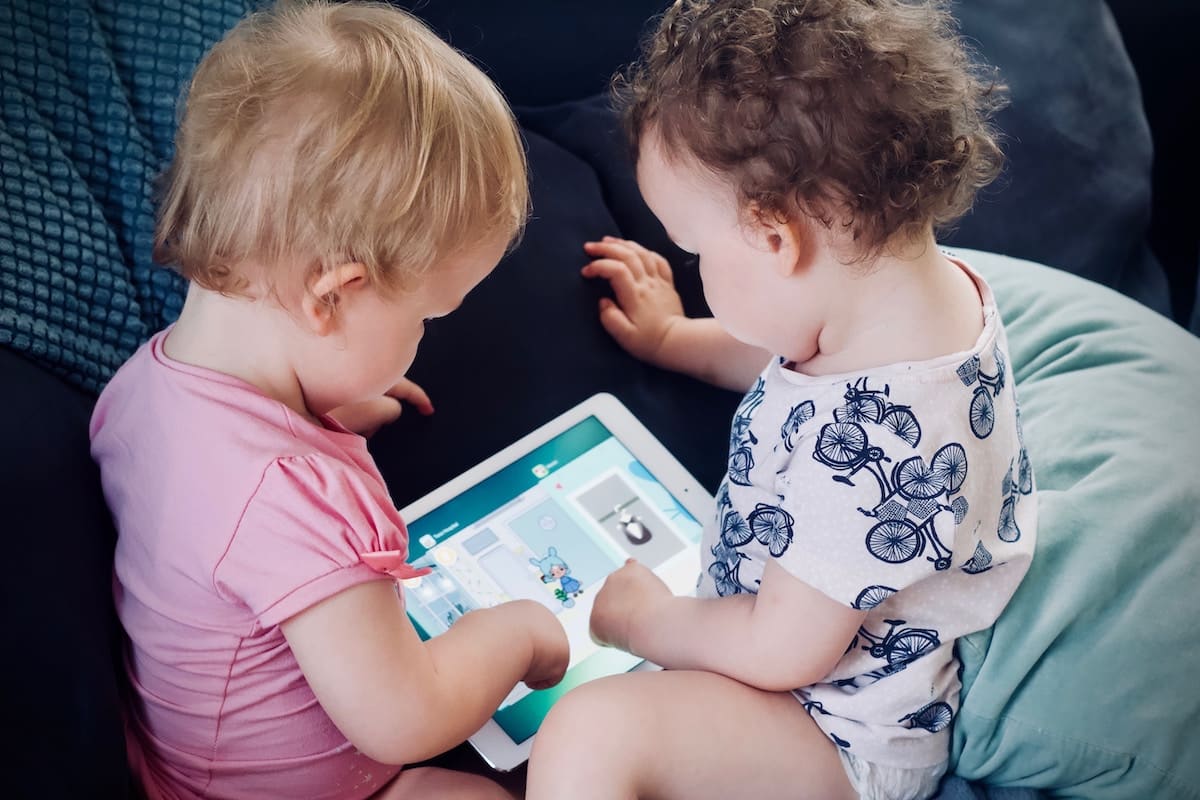I grew up watching parents hand over a phone and play CoComelon whenever their little one got restless. Back then, I thought it was some secret ninja trick to handle fussy babies. Who knew I’d end up doing the same with my own wee one in my lap? But here’s what I’ve learned in my motherhood journey: falling back on unhealthy patterns to cope should never be the go-to option. Yes, technology is everywhere. But that doesn’t mean we need to push it onto our kids. There are so many sensory activities that can keep them engaged without a screen. And that’s exactly why I’m here today. I’ll break down the hidden effects of technology on children and share some healthier alternatives you can turn to when you need to keep them busy.
Stay tuned, mama. This is going to be worth your time.
The Bright Side of Technology
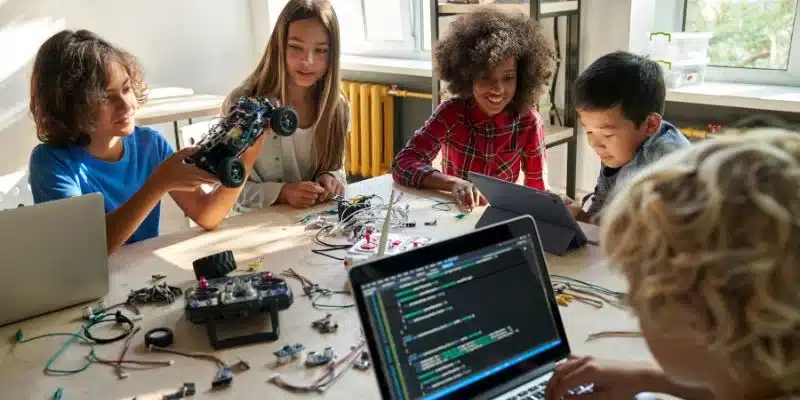
Credit: globalworldconnection.com
I’ll start by decoding what good it brings to the table. Let’s start with the positives. Because yes, there really are benefits. The effects of technology on children are not always negative. Sometimes, it surprises us in the best ways.
Learning Made Fun
Okay, I’ll be honest. Teaching letters and numbers can get tiring. That’s where technology for children shows its brighter side. My daughter learned animal sounds through a fun little app. She was mooing and roaring before she could even say “zebra.”
Educational apps and shows make learning playful. Kids don’t even realize they’re soaking up lessons. For many families, this is one of the big technology benefits children experience at an early age.
Staying Connected
I believe this is one of the biggest benefits of screens. My son talks to his grandparents on video calls. They live far away, but he knows their faces, voices, and even their jokes.
Without screens, that bond would fade. Technology bridges the distance and helps build strong family ties. For children, staying connected is more than fun; it’s emotional security.
Boost in Creativity
Screens can open doors to creativity, too. My kids love drawing on tablets, building digital castles, and experimenting with music apps. This side of technology for children often gets overlooked.
It’s amazing how tools like these spark imagination in ways crayons sometimes can’t. Tech lets kids express themselves in new forms, while still encouraging them to dream big.
Growing Problem-Solving Skills
Here’s something that surprised me: puzzle games. I know that some parents may worry about technology addiction in children, but I’ve seen the opposite in certain cases.
My son plays games that force him to stop, think, and try again. When he finally cracks a tough level, his little cheer makes my heart melt. These games teach patience, persistence, and planning. That’s a powerful skill set for growing minds.
And speaking of helping your little one reach new milestones, it’s not just about screen time. You can support their independence with practical tools, too, like a sturdy wooden stool. If you’re looking for one, check out this guide on the best wooden stools for babies, it’s a great way to encourage your child to take those next steps, literally!
More Than Cartoons
We often hear about the pros and cons of screen time technology on children. It’s easy to only focus on the bad.
When guided well, screens can grow brains, spark joy, and connect families. It’s not about asking “is television bad for infants” or “why shouldn’t babies watch TV” only. It’s also about asking how much is right and when it’s helpful, like managing screen time for 2-year-olds or deciding how much screen time a 9-year-old should have.
With balance, technology becomes less of a threat and more of a helpful tool.
Hidden Downsides of Technology
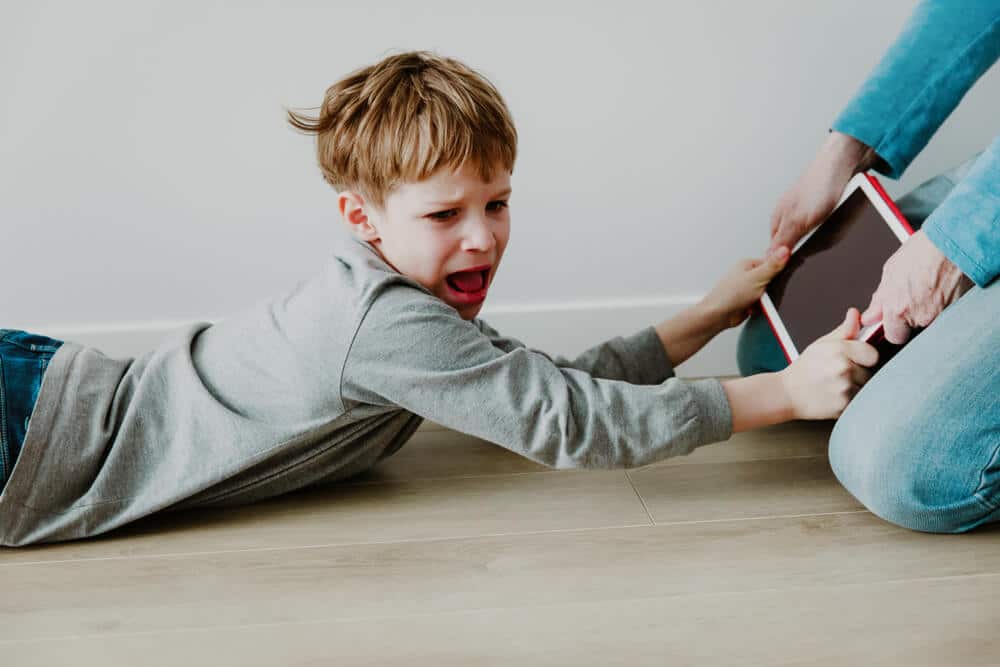
Credit: findmykids.org
Now comes the part we often whisper about, the worries. The effects of technology on children are not always obvious at first. They sneak in slowly, shaping sleep, moods, patterns, and even how kids play.
Sleep Struggles
I’ve learned the hard way that too much mobile usage by children before bed ruins sleep. My kids stay up later, and when they finally do rest, it’s lighter and shorter. But, hey, moms, you can balance it now with the help of this guide.
Has it ever happened that you struggle to sleep after using your mobile phone too much before going to bed? Because I am guilty.
So, the deal is that the blue light from screens tricks their brains into thinking it’s still daytime. That’s why experts say screen time for 2-year-olds should be very limited, especially near bedtime. And honestly? It makes sense. When my kids skip screens and we read books instead, bedtime is calmer.
Shorter Attention Spans
This one hit me during story time. After too much tablet play, my son couldn’t sit still for a simple book. He wanted fast action, bright pictures, and constant stimulation. And this happens to me as well. I can’t watch a reel longer than 30 seconds.
So, yes, it shows one of the technological disadvantages to children. Their patience shortens, and focusing on quiet activities gets harder. When I think about how much screen time a 9-year-old has, it becomes clear, balance is everything.
Social Impact
Screens sometimes replace real play, and that worries me most. My daughter has chosen cartoons over running outside with friends.
Too much screen time can:
- Make kids more withdrawn.
- Reduce face-to-face conversations.
- Limit teamwork and problem-solving.
This is one of those technology effects on children that isn’t talked about enough. No screen can replace messy, giggly playground games.
Physical Health
Screens keep kids sitting. And sitting too long means less running, climbing, and exploring. Childhood is meant for scraped knees, not endless scrolling.
Here’s what I’ve noticed:
- My son’s energy crashes when he skips outdoor play.
- He gets crankier after long tablet sessions.
- His body feels stiff when he doesn’t move enough.
This is where the pros and cons of screen time technology’s effects on children come into focus. Movement fuels growth, but too much tech holds them back.
Emotional Ups and Downs
This is the one that sneaks in fast. I’ve seen meltdowns when Wi-Fi fails, or tantrums when screen time ends.
The mood swings are real:
- Happy when the tablet starts.
- Angry or sad when it stops.
And hey, sometimes, even very young kids act like technology-dependent children. It’s a reminder that while there are technological benefits children enjoy, we must guide them carefully to avoid the flip side.
The Slow Creep
Here’s the thing: these effects don’t show up overnight. They creep in little by little. A late bedtime here. A skipped outdoor play session there. A tantrum when screens are taken away.
That’s why many parents ask questions like:
- Is television bad for infants?
- Why shouldn’t babies watch TV?
- What are 10 reasons why screen time is bad?
The answers are rarely simple. But as moms, we see the patterns early. And we’re the ones who can step in before screens take over.
Finding the Middle Ground
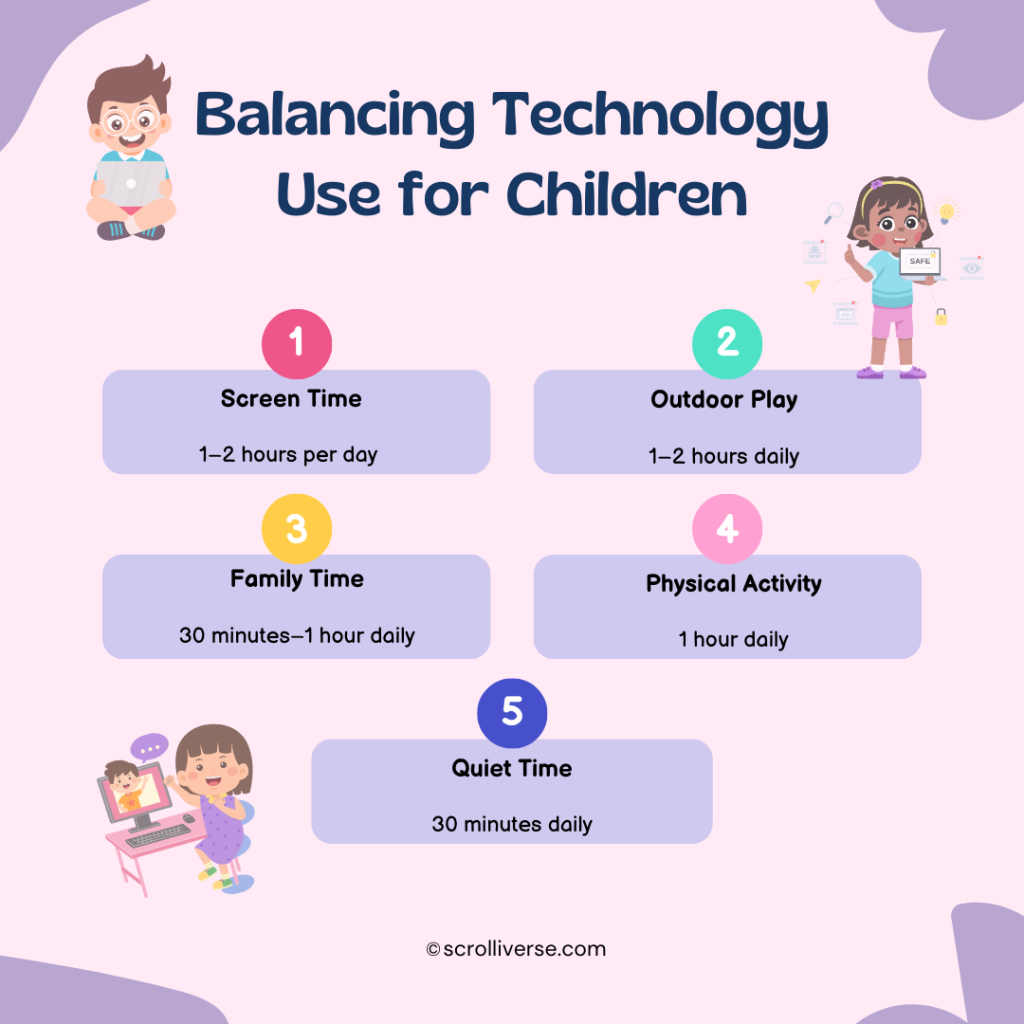
Here’s the truth: we don’t need to throw devices out the window, but we also don’t want to give kids endless hours of screen time. The key is balance.
In my home, I follow the “not too much, not too little” rule. My kids know that screens are allowed, but they’re not always available. They also understand that outdoor play is just as important as screen time.
Balance means that screens work with family life, not against it. It means using technology for children as a tool, not a babysitter. And it’s something we’ve learned through trial and error.
How We Find Balance?
- Set Limits: My kids know screen time is limited, there’s a time for fun, and a time for other things.
- Make It Intentional: We use technology for children to learn, not just to pass the time.
- Encourage Play: After screens, outdoor play helps them move and stay active.
- Co-Play: I join in on screen time, so we can bond and talk about what they’re learning.
- Balance Real Life: Family game nights or cooking together replace screen time, helping us reconnect.
Sensory Alternatives: Engaging Kids Without Screens
If you’re looking for ways to entertain your kids without relying on screens, sensory toys are a great option.
They not only keep kids engaged but also help develop important skills like motor control, problem-solving, and creativity.
Active Play & Movement Toys
Holyton Upgraded Stepping Stones for Kids
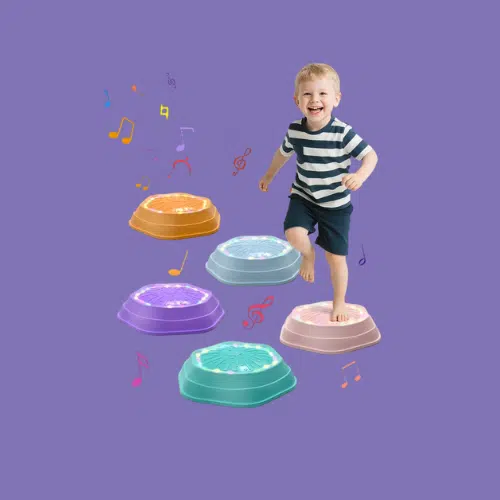
Why It Shines?
These colorful, interactive stepping stones are designed to make physical activity exciting.
- Interactive stepping stones with music
- Non-slip, durable material for secure play
- Can be used indoors or outdoors
- Boosts balance, coordination, & motor skills
- Easy to store with a stackable design.
Tactile Sensory Toys
Schylling NeeDoh Nice Cube
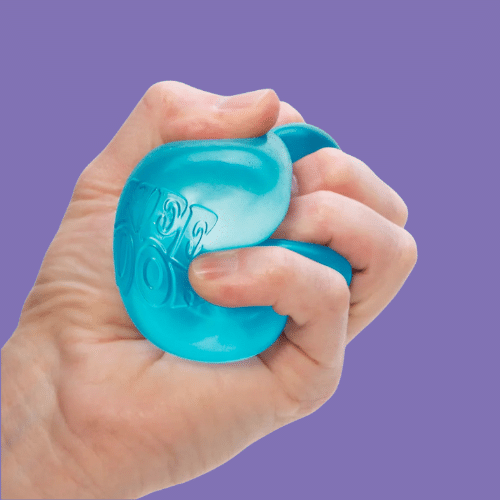
Why It Shines?
The Schylling NeeDoh Nice Cube offers a satisfying sensory experience, ideal for children seeking tactile stimulation without screens.
- Size: 2.25" cube, perfect for small hands
- Material: Made from thermoplastic rubber
- Color: Available in blue, pink, and purple
- Age: Suitable for ages 3 and up.
- Safety Note: Not for children under 3 years
Creative Problem-Solving Toys
SHASHIBO Shape Shifting Box

Why It Shines?
The SHASHIBO Shape Shifting Box is an award-winning, magnetic puzzle cube that transforms into over 70 unique shapes, offering endless creative possibilities.
- Dimensions: 2.5 x 2.5 x 0.04 inches
- 36 earth magnets for shape transformations
- Recyclable plastic with tear-resistant stickers
- Features 4 unique art designs
- Age: Suitable for ages 8 and up
Hey moms, let’s see what parents have to say about these sensory toys.
These stepping stones are such a hit at our house! The added layer of fun with the music when stepping has made playtime even more interactive and exciting. The stepping stones helped us practice balancing with our toddler and for the price of these compared to other brands I would order these again! The strips on the bottom of the stones make them sturdy and slip free too!
Addictive to play with! Softens when it gets warm but stays firm and holds form. I took it to work and it makes a good fidget when I’m trying to think. It picks up a little lint so it won’t stay shiny, but it’s not dirty, so that’s just a heads up for those of you that care. Otherwise totally worth it, no regrets, and I might buy more for family.
Another parents says:
These things are really cool, they keep my kids occupied for an extended amount of time and they never get old
See? These toys bring good for your child’s overall health, focus, and more.
So, I suggest balancing the use of technology time for your children and adding a good time of playing outdoors as well. Believe me, you won’t regret it.
And when it’s time for a cozy bath, why not make it fun too? Check out our guide on the best baby bath toys to keep bath time enjoyable and engaging. Believe me, you won’t regret it.
Ending Remarks
At the end of the day, technology is part of childhood now. It isn’t the enemy. It isn’t the hero either. Like most things, it’s about how we use it.
As moms, we see the magic screens bring. We also see the tantrums they spark. Our job is to guide, not ban. To teach, not just worry.
Finding balance is messy some days. But trust me, you are not alone in this. Together, we can raise kids who enjoy tech without being ruled by it.
Frequently Asked Questions
Let’s talk about the effects of technology on children and the summary of what we have discussed so far.
How many hours of screen time is safe for kids?
Experts suggest one hour for younger kids and up to two for older kids. But every family is different.
Can screens really help with learning?
Yes. Quality apps and shows can teach letters, numbers, and even social skills.
What if my child throws tantrums when I take screens away?
Stay calm and consistent. Set limits early. Over time, tantrums fade as kids learn what to expect.
Should I allow screens before bed?
It’s best to stop at least one hour before sleep. This helps the brain wind down.
How do I know if my child is getting too much screen time?
Watch for changes in sleep, mood, and interest in play. Those signs show when balance is slipping.

